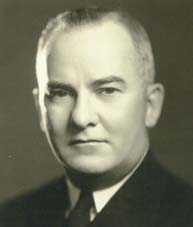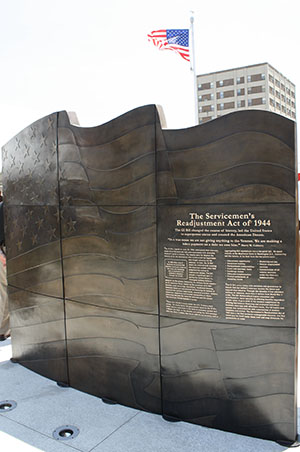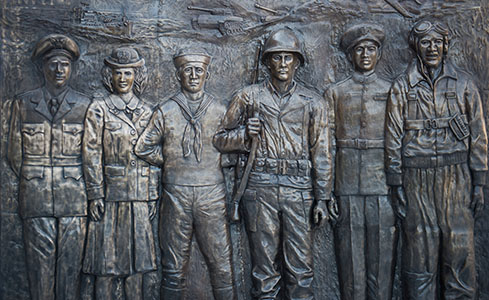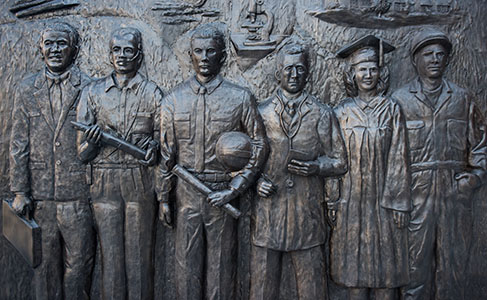
American Legion Past National Commander and Topeka attorney, Harry W. Colmery, is best remembered as the author of the The Servicemen’s Readjustment Act of 1944, better known as the G. I. Bill of Rights. The GI Bill of Rights is credited with fundamentally changing the face of our country – building a middle class that had access to higher education and affordable home loans; thereby a means of providing for their families as they returned from combat. He was deeply moved by the veterans he saw returning from WWI “maimed and diseased; some grope with blinded eyes; some hobble on canes…to all of these a grateful nation pays tribute.” To honor Mr. Colmery, the American Legion launched a campaign in 2014 to raise funds necessary to build a park just one block from the State Capitol Building in Topeka, Kansas, to be a permanent memorial for Harry and the legacy he leaves for all veterans who came after him. Since then, more than $400,000 has been raised for the project. The Harry W. Colmery Memorial Plaza was dedicated June 22, 2016, on the 72nd anniversary of the signing of The Servicemen’s Readjustment Act of 1944. Pat Michaelis, Chairman of the Colmery Memorial Plaza project, and Jimmie Foster, Adjutant, Kansas American Legion welcomed those in attendance. Presentation of the Plaza was done by Eddie Shirron, Colonel U. S. Army (Ret.), Mina Steen, granddaughter of Harry Colmery, Vince Frye, President and CEO of Downtown Topeka, Inc., and Larry Wolgast, Mayor of Topeka. Major General Lee Tafanelli, the Adjutant General of Kansas, introduced the featured speaker, Major General Paul E. Funk, II. Major General Funk is also the Assistant Deputy Chief of Staff of Operations and Plans, U. S. Army, and former Commanding General First Infantry Division. The plaza features a life-size bronze statue of Colmery saluting six WWII era uniformed veterans on the bronze relief in front of him. Six veterans, one for each of the branches of the US military during WWII. Standing behind Colmery is another bronze relief depicting those same six veterans in clothes indicative of their professional careers that the GI Bill of Rights enabled them to pursue. |
  Harry salutes the veterans of WWII.
|
|||
|
||||






